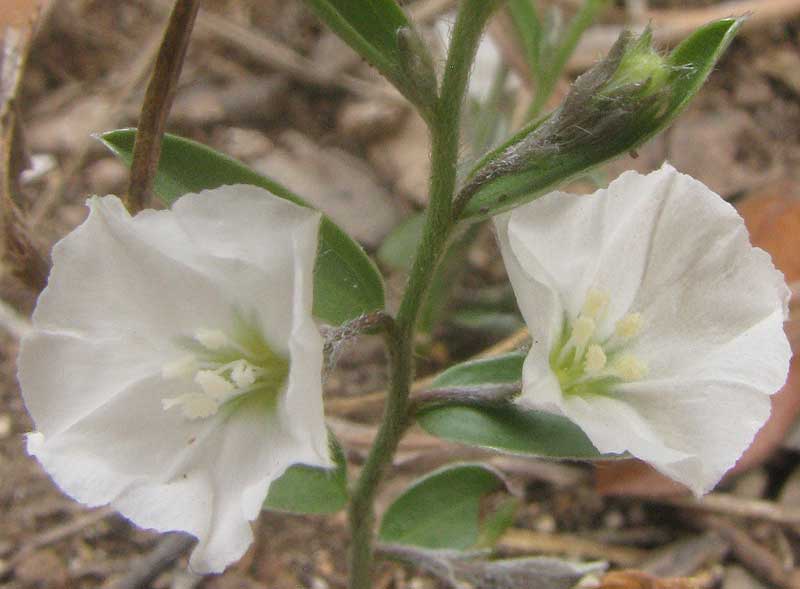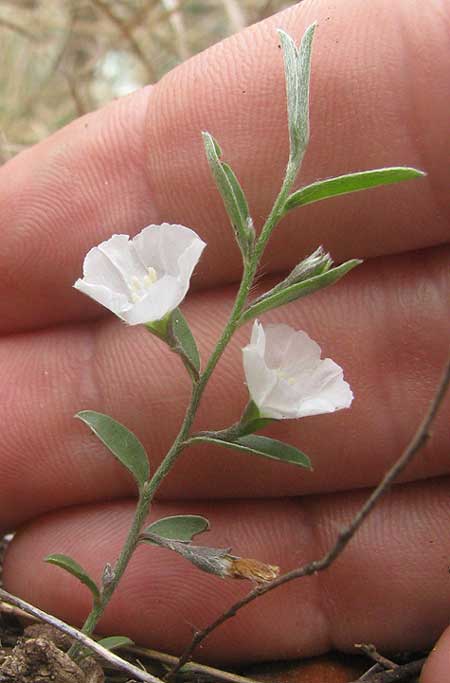Excerpts from Jim Conrad's
Naturalist Newsletter

from the June 1, 2014 Newsletter issued from the Frio Canyon Nature Education Center in the valley of the Dry Frio River in northern Uvalde County, southwestern Texas, on the southern border of the Edwards Plateau; elevation ~1750m (~5750 ft); N29.62°, W99.86°; USA
SILVER DWARF MORNING-GLORY
With the drought, much fewer wildflowers are blossoming now than at this time in recent years, but in the crisp-dry grass right beside Juniper House's back door this week a tiny, mysterious herb showed up bearing small, white flowers, as seen below:

That's a close-up of the flowers at the top of this page.
The blossoms with their funnel-shaped corollas arising from calyxes with long, sharply pointed sepals, and bearing inside the corollas five stamens with relatively large anthers surrounding the ovaries' long, slender styles is a very familiar flower type, but such flowers aren't "supposed" to be on short stems like this. These are morning-glory flowers, but morning-glories are supposed to be vines, and this plant obviously isn't.
However, in Mexico we've gotten used to the idea that some members of the Morning-glory Family can be other than vines -- such as the Morning Glory Tree, Ipomoea carnea, so common in the Yucatan.
And, in fact, our little doorstep plant is indeed a non-vining morning-glory. It's EVOLVULUS SERICEUS, often known as the Silver Dwarf Morning-glory or White Evolvulus, mostly occurring in tropical America from central South America north through Central America, the Caribbean and Mexico into the southern tier of US states, from Florida to Arizona.
Though our plant stands only about three finger-widths high, I read that the species can grow to a foot, so ours must be stunted by the drought.
In the Yucatan the Silver Dwarf Morning-glory is used medicinally to treat burns.